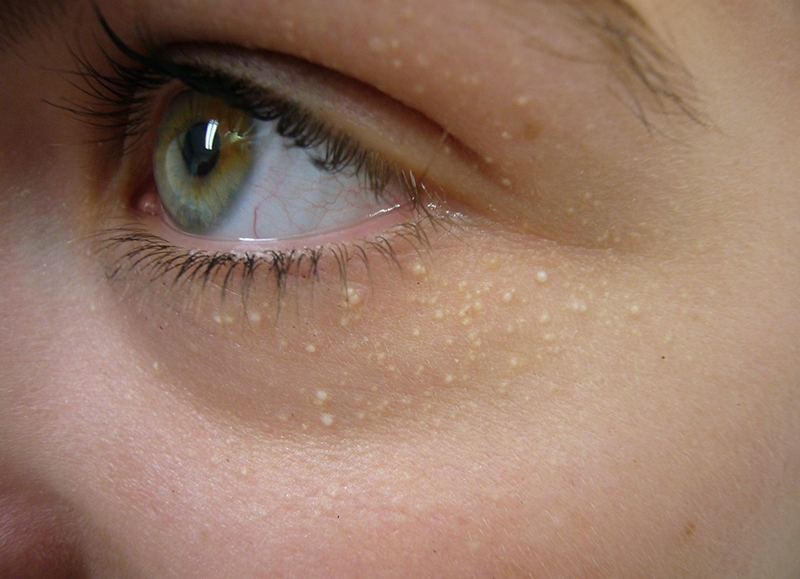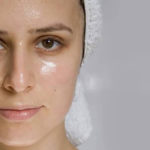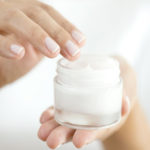In some individuals, whiteheads suddenly appear on the cheek area and around the eyes, often mistaken for cystic acne. These are actually milia, which often appear in small clusters.
They occur when keratin (a type of protein) becomes trapped underneath the skin (the dermis). They are white or slightly yellow and have a diameter of 1 to 2 mm. They often appear on the forehead, cheeks, nose, and chin, but can also appear on the upper body and limbs.

Causes of milia
In the case of infants, the cause of milia is unknown. In adults, it is often related to previous skin injuries, such as:
– Blistering wounds.
– Burns.
– Prolonged exposure to sunlight.
– Laser skin resurfacing.
– Impaired natural exfoliation of dead skin cells (due to aging).
Chemical peels can be used to exfoliate the top layer of skin, revealing a new layer of skin underneath.

They are deeply embedded in the skin, and you cannot access them without damaging the skin. In such cases, a dermatologist can perform a simple non-invasive procedure using a sterile needle.
How to remove milia
Although there is no specific treatment to remove them, there are some preventive measures that can help prevent them and promote faster disappearance:
– Clean the affected area daily with a gentle facial cleanser.
– Use steam to open the pores.
– Exfoliate the skin 2 or 3 times a week.
– Avoid excessive sun exposure and use sunscreen.
– Avoid heavy creams or oil-based products.
Chemical peels can be used to exfoliate the top layer of skin, revealing a new layer of skin underneath.
Can milia be prevented?
Moisturizers and eye creams can clog the hair follicles, leading to the appearance of milia. Therefore, you should regularly cleanse, exfoliate, and moisturize your skin, avoiding excessive use of oily moisturizers.
Lactic acid is a larger molecule, so it does not penetrate deep into the skin and may cause less irritation.
Avoid excessive sun exposure, avoid using heavy creams or oil-based products, and chemical peels. Prevent any issues by applying retinoids topically before undergoing the procedure.
– Use spot-on retinoids (cream or gel derived from vitamin A).






































